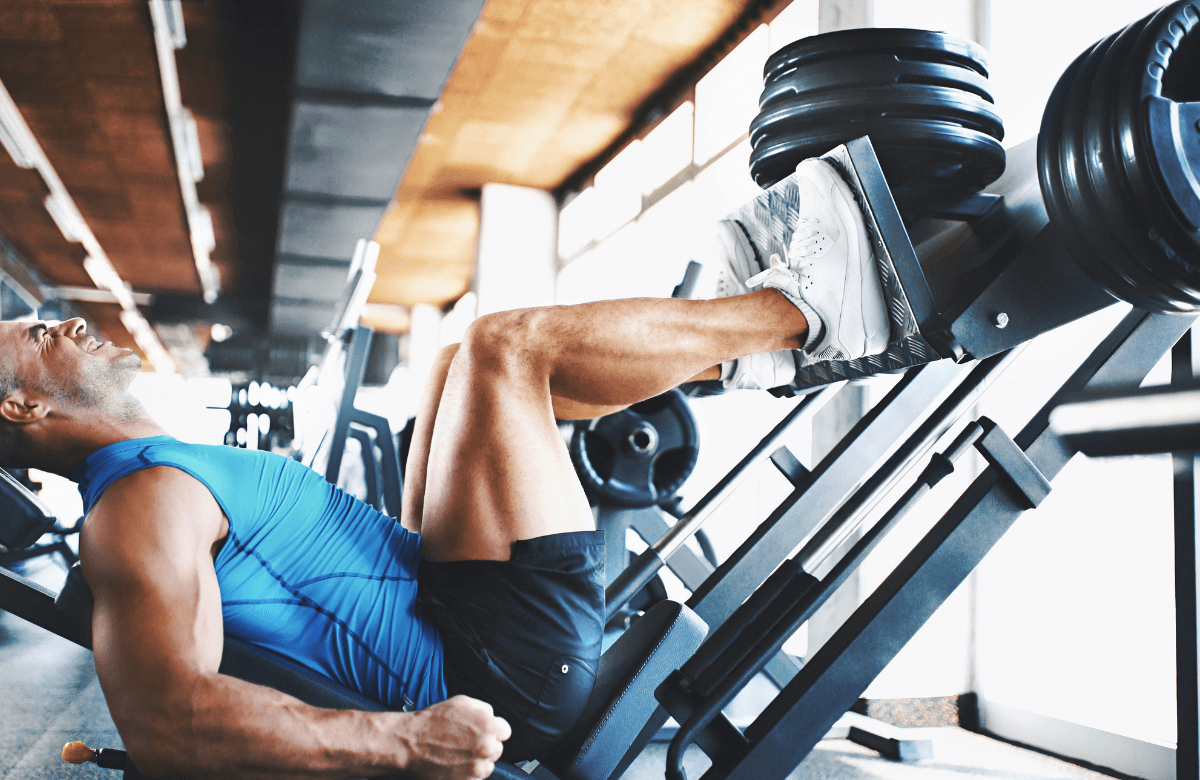A well-rounded leg workout is essential for building muscular strength, enhancing athletic performance, and achieving a balanced physique. The lower body contains some of the largest and most powerful muscle groups, making leg exercises a cornerstone of any fitness regimen. In this article, we will delve into the benefits and techniques of the top leg exercises that target various muscles, promoting both muscle growth and functional strength.
Jump to:
How to warm up properly
Warming up properly before any leg exercise is essential for preventing injuries and maximizing your workout performance. A good warm-up prepares your muscles and joints for the demands of your training session, increases blood flow to the working muscles, and enhances your range of motion. Below are some essential steps to follow when warming up for leg exercises.
1. Starting Position
Begin by standing with your feet shoulder-width apart and your body weight evenly distributed. This neutral starting position allows for proper alignment and stability throughout your warm-up routine.
2. Feet and Hip Mobility
Perform exercises that specifically target your feet and hip joints. This can include ankle circles, toe taps, or lateral leg swings. These movements help to increase the mobility and flexibility of your lower body, which is important for performing functional movements during leg exercises.
3. Calf Muscle Stretch
Tight calf muscles can restrict your range of motion and increase the risk of injuries. Take a moment to stretch your calf muscles by placing your left foot slightly behind your right foot. Keep both feet flat on the ground and gently lean forward, feeling a stretch in your left calf. Hold this stretch for 20-30 seconds, then switch sides.
4. Knee Warm-up
It’s important to pay attention to your knee joints before engaging in any leg exercises. To warm up your knees, perform controlled knee circles in both directions. This gentle movement helps to lubricate the knee joint and improves its range of motion.
5. Squat Position
To prepare your leg muscles for squat exercises, get into a squat position by bending your knees slightly and lowering your hips. This dynamic movement helps to activate the muscles in your lower body and improves your squat form and stability.
6. Core Activation
Engaging your core muscles is crucial for maintaining proper form and stability during leg exercises. Include exercises like planks or core twists to activate and strengthen your core muscles.
Remember to perform each warm-up exercise for an adequate amount of time to allow your muscles and joints to loosen up and increase blood flow. A warm-up routine should typically take about 10-15 minutes, depending on your body’s needs.
By taking the time to warm up properly before engaging in any leg exercises, you’ll reduce the risk of injuries, optimize your performance, and enhance your overall training experience. Remember to always listen to your body and consult with a fitness professional or physical therapist if you have any concerns or specific limitations.
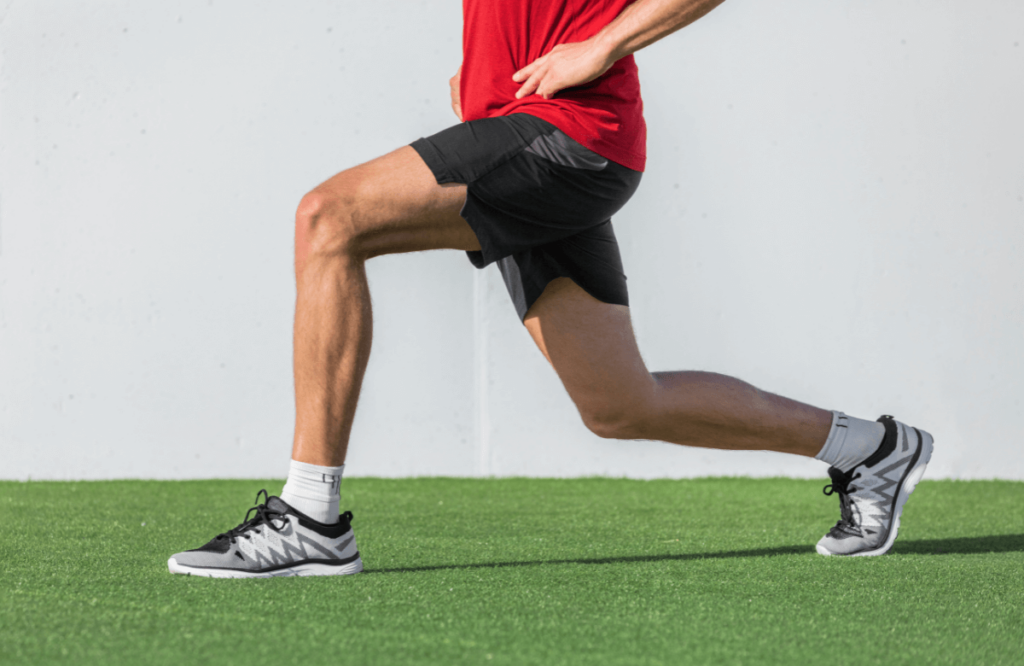
Major Leg Muscles
When it comes to leg exercises, it’s essential to target the major leg muscles for a comprehensive and effective workout. Working these muscles not only helps to build strength and power but also improves overall mobility and stability. So, let’s dive into the major leg muscles and the exercises that target them.
Quadriceps
The quadriceps are the largest muscles in your legs and are responsible for extending your knees. They consist of four muscles, namely the rectus femoris, vastus lateralis, vastus intermedius, and vastus medialis. Squats are an excellent exercise for targeting the quads, as they involve knee extension, requiring you to push through your feet and straighten your legs. Lunges and leg presses can also engage the quadriceps effectively.
Hamstrings
The hamstrings are located at the back of your thighs and are responsible for flexing your knees and extending your hips. They consist of three muscles: the biceps femoris, semitendinosus, and semimembranosus. Romanian deadlifts are a great exercise for targeting the hamstrings. This exercise involves hinging at the hips while keeping a slight bend in your knees and lowering the weights towards the ground. Other effective hamstring exercises include glute bridges, hamstring curls, and leg curls.
Glutes
The gluteal muscles, including the gluteus maximus, gluteus medius, and gluteus minimus, are crucial for hip extension and rotation. Strong glutes not only improve your athletic performance but also help stabilize your pelvis and lower back. Squats, lunges, and hip thrusts are all fantastic exercises for targeting the glutes. To engage the glutes even more, try adding resistance bands or weights to your exercises.
Calves
The calf muscles, specifically the gastrocnemius and soleus, are responsible for plantar flexion, which is the movement that lets you point your toes downward. Calf raises are a popular exercise for targeting the calves. They involve standing with your feet flat on the ground and then raising your heels off the floor. You can perform calf raises with body weight, or you can add resistance by using a calf raise machine or holding dumbbells.
Remember, when working the major leg muscles, it’s crucial to maintain proper form and range of motion to minimize the risk of injury. Start with a warm-up routine that includes exercises like ankle circles and leg swings to prepare your muscles and joints. Gradually increase the intensity and weight as your strength and proficiency improve. Also, listen to your body and give yourself enough time to recover after intense leg workouts. By targeting the major leg muscles, you can develop strength, mobility, and power in your lower body, helping you reach your fitness goals.
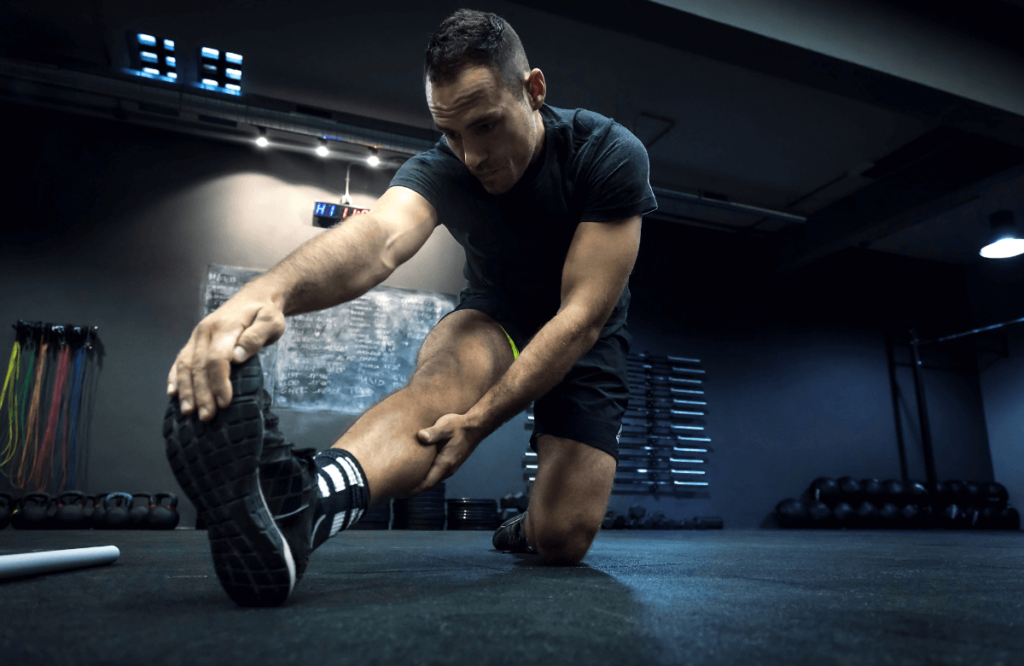
Movement patterns in a good leg workout
When it comes to a good leg workout, movement patterns play a crucial role in targeting different muscles and maximizing results. By incorporating a variety of exercises that focus on different movement patterns, you can effectively work all the major leg muscles and achieve your fitness goals. Let’s take a closer look at some movement patterns commonly used in leg workouts.
Squat Pattern
The squat is a fundamental movement pattern that targets multiple leg muscles. It involves bending your knees and hips while maintaining an upright position. To perform a squat, start by standing with your feet shoulder-width apart and toes slightly turned out. Lower your body down as if sitting back into a chair, aiming for a 90-degree angle in your knees. Keep your chest lifted and your core engaged. As you push through your feet, return to the starting position. The squat pattern works your quads, hamstrings, glutes, and core muscles.
Lunge Pattern
Lunges are another effective leg exercise that targets different muscles and helps improve balance and stability. Start by standing with your feet hip-width apart. Take a step forward with your right foot, keeping your left foot planted. Lower your body down until both knees are at a 90-degree angle, with your right knee directly above your right ankle and your left knee hovering just above the ground. Push through your right foot to return to the starting position. Repeat on the other side. Lunges work your quads, hamstrings, glutes, and calves.
Hinge Pattern
The hinge pattern involves hip flexion and extension, and it targets the hamstrings and glutes. One common exercise that utilizes this movement pattern is the Romanian deadlift. Start by standing with your feet hip-width apart and a slight bend in your knees. Hold a barbell or dumbbell in front of your thighs with an overhand grip. Hinge at your hips while keeping your back flat, lowering the weights towards the ground. Push through your heels to return to the starting position. The hinge pattern also works your core muscles.
Calf Raise Pattern
Calf raises target the calf muscles and improves ankle strength and stability. Begin by standing with your feet flat on the ground, shoulder-width apart. Slowly raise your heels off the floor, shifting your weight to the balls of your feet. Hold for a moment, then lower your heels back down. You can perform calf raises with just your body weight or add resistance by using a calf raise machine or holding dumbbells.
Incorporating these movement patterns into your leg workouts will provide a well-rounded training session that targets all the major leg muscles while improving mobility and stability. Remember to always prioritize proper form to reduce the risk of injuries and to achieve optimal results.
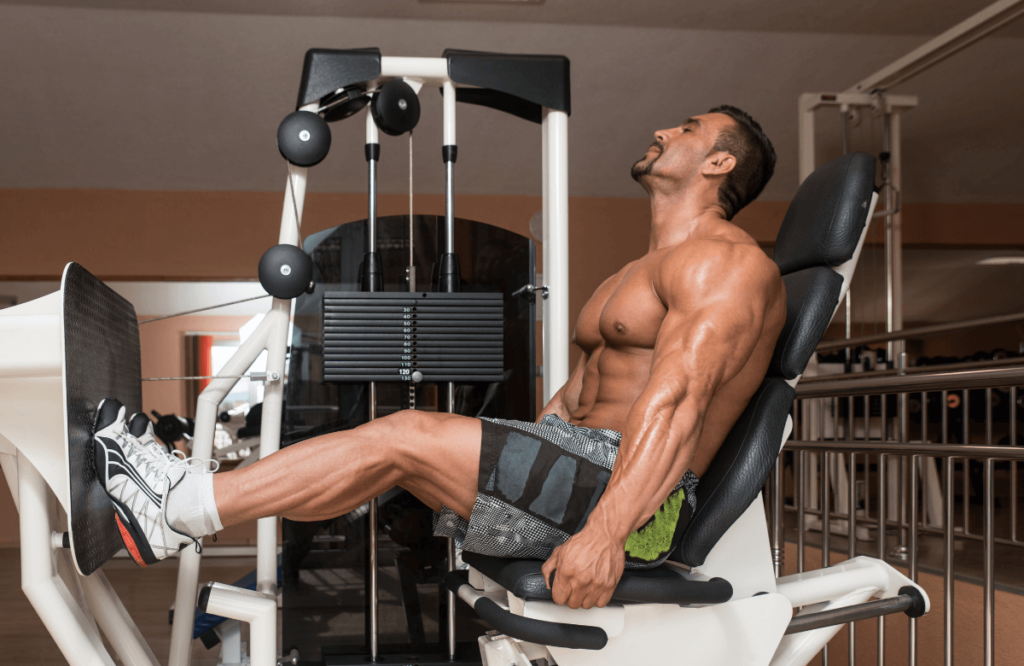
A Comprehensive Approach: Crafting a Well-Rounded Routine
When it comes to leg exercises, a wide array of options exists to effectively target and strengthen the muscles of your lower body. Whether your goal is to increase muscle size, enhance strength, or elevate athletic performance, selecting the right leg exercises for your workouts is paramount.
Benefits Beyond Strength: Mobility and Metabolism
Incorporating leg exercises into your workout regimen not only fosters muscle strength and power but also enhances mobility and stability. Furthermore, working your leg muscles can boost your metabolic rate and calorie burning, contributing positively to overall body composition. However, conducting these exercises with proper form and technique is paramount to minimizing injury risks. Enlisting guidance from a qualified fitness professional or a physical therapist can provide invaluable insight into proper technique and safe progression.
To maximize the advantages of leg exercises, it’s pivotal to complement them with a comprehensive training plan that encompasses all major muscle groups. Integrating exercises such as lunges, step-ups, and calf raises alongside squats and deadlifts can create a comprehensive leg workout that targets diverse muscle groups, enhancing leg strength and stability holistically.
Form and Technique: The Cornerstones of Success
In conclusion, initiating your leg exercises with accurate form and technique is the linchpin of reaping the full benefits of each movement. From squats to deadlifts and their variations, concentrating on the major leg muscles and adhering to proper training protocols will expedite progress and curtail injury risks. So, lace up your sneakers, prepare to train, and observe how the incorporation of these leg exercises can propel your fitness journey to new pinnacles.
12 Best Leg Exercises
1. Back Squat
Among the fundamental pillars of lower body strength training, the Back Squat reigns supreme as a timeless exercise that holds a central position in countless fitness routines. As a compound movement, the Back Squat effectively targets crucial muscle groups such as the quadriceps, hamstrings, and glutes. Its adaptability and capacity for heavy loading make it an essential tool for both building muscle and fortifying functional strength. I
Benefits of the Back Squat
The Back Squat is a classic compound exercise that primarily targets the quadriceps, hamstrings, and glutes. Its versatile nature allows for heavy lifting, making it a staple in strength and muscle-building routines.
How to Do the Back Squat
- Start by positioning a barbell on a squat rack at chest height.
- Step under the barbell and place it on your upper back, resting it across your traps and rear shoulders.
- Grab the barbell with a comfortable grip, slightly wider than shoulder-width apart.
- Step back from the rack and position your feet shoulder-width apart, with toes slightly turned out.
- Initiate the squat by pushing your hips back and bending your knees, keeping your back straight and chest up.
- Lower your body until your thighs are parallel to the ground or lower.
- Push through your heels to stand back up, maintaining an upright torso throughout the movement.
2. Front Squat
The Front Squat shifts the barbell to the front of your shoulders, emphasizing the quadriceps while engaging the core and upper back muscles. This variation also promotes an upright posture.
Benefits of the Front Squat
The front squat is a fundamental compound exercise that primarily targets the quadriceps, but also engages the core, glutes, and lower back muscles. Its unique barbell placement in front of the shoulders challenges stability and promotes an upright posture, contributing to improved squat mechanics.
How to Do the Front Squat
- Start by positioning a barbell on a squat rack at chest height.
- Cross your arms in front of you and create a “rack” for the barbell to rest on your front shoulders.
- Alternatively, use a “clean grip” by placing your fingertips under the barbell and lifting your elbows high.
- Step back from the rack and position your feet shoulder-width apart, with toes slightly turned out.
- Initiate the squat by pushing your hips back and bending your knees, keeping your back straight and chest up.
- Lower your body until your thighs are parallel to the ground or lower.
- Push through your heels to stand back up, maintaining an upright torso throughout the movement.
3. Bulgarian Split Squat
The Bulgarian split squat is a unilateral exercise that focuses on quadriceps development while enhancing balance and stability. This exercise also engages the glutes and hamstrings, contributing to overall leg strength.
How to Do the Bulgarian Split Squat
- Stand a couple of feet in front of a bench or platform.
- Extend one leg behind you and place the top of your foot on the bench.
- Lower your back knee toward the ground, forming a 90-degree angle with both knees.
- Push through the front heel to return to the starting position.
- Complete repetitions on one leg before switching to the other.
4. Leg Press
The leg press is a machine-based exercise that primarily targets the quadriceps, hamstrings, and glutes. It allows you to lift heavy weights safely, promoting muscle growth and strength.
Benefits of the Leg Press
The leg press is especially beneficial for beginners and those recovering from injuries, as it minimizes stress on the lower back while providing effective muscle stimulation.
How to Do the Leg Press
- Sit on the leg press machine and place your feet shoulder-width apart on the platform.
- Unrack the weight and slowly lower the platform by bending your knees.
- Push the platform back up by extending your knees, but avoid locking them out completely.
5. Hack Squat
The hack squat is a compound movement that targets the quadriceps, hamstrings, and glutes. It’s performed on a specialized hack squat machine, providing a different squatting variation.
Benefits of the Hack Squat
The hack squat’s unique machine design provides additional back support, allowing lifters to focus on their leg muscles without compromising form.
How to Do the Hack Squat
- Position yourself on the hack squat machine with your shoulders against the pads and your feet shoulder-width apart.
- Unrack the weight and bend your knees to lower yourself.
- Push through your heels to extend your knees and return to the starting position.
6. Romanian Deadlift
The Romanian deadlift primarily targets the hamstrings and glutes while also engaging the lower back and core muscles. It’s an effective exercise for developing posterior chain strength and improving hip mobility.
Benefits of the Romanian Deadlift
The Romanian deadlift helps to strengthen the muscles involved in hip extension, which is crucial for movements like running, jumping, and lifting.
How to Do the Romanian Deadlift
- Stand with your feet hip-width apart and hold a barbell in front of your thighs with an overhand grip.
- Keeping your back straight and knees slightly bent, hinge at your hips and lower the barbell down your thighs.
- Lower the barbell until you feel a stretch in your hamstrings, then push your hips forward to return to the starting position.
7. Lunges
Lunges are a versatile exercise that targets the quadriceps, hamstrings, and glutes while also improving balance and stability.
Benefits of Lunges
Lunges can be customized with various step lengths and directions, allowing you to target different leg muscles and challenge your balance.
How To Do a Lunge
- Stand with your feet together.
- Take a step forward with one leg and lower your body until both knees are bent at 90 degrees.
- Push through your front heel to return to the starting position, then repeat on the other leg.
8. Deadlifts
The deadlift is a compound exercise that engages multiple muscle groups, including the hamstrings, glutes, lower back, and grip muscles.
Benefits of Deadlifts
Deadlifts are not only an excellent leg exercise but also a full-body strength builder that improves overall muscle coordination and functional strength.
How To Do a Deadlift
- Stand with your feet hip-width apart and a barbell in front of you.
- Bend at your hips and knees to grip the barbell with an overhand or mixed grip.
- Keeping your back straight, push through your heels to lift the barbell off the ground.
- Stand up fully, then reverse the movement to lower the barbell back down.
9. Step-Ups
Step-ups are a functional exercise that targets the quadriceps, hamstrings, and glutes, mimicking movements used in daily activities and sports.
Benefits of Step-Ups
Step-ups improve single-leg strength and stability, aiding in injury prevention and enhancing overall athletic performance.
How To Do A Step-Up
- Stand in front of a bench or platform.
- Step onto the bench with one foot, pushing through your heel to lift your body up.
- Bring your other foot onto the bench, then step back down one foot at a time.
10. Box Jumps
Box jumps are a plyometric exercise that targets explosive leg power and coordination. This exercise engages the quadriceps, hamstrings, and calves while enhancing cardiovascular fitness.
Benefits of Box Jumps
Box jumps improve fast-twitch muscle fibers, enhancing your ability to generate explosive force and increasing your vertical jump.
How To Do a Box Jump
- Stand in front of a sturdy box or platform.
- Bend your knees and swing your arms back.
- Explosively jump onto the box, extending your hips and knees.
- Land softly with bent knees, then step back down and repeat.
11. Calf Raises
Calf raises focus on the calf muscles (gastrocnemius and soleus), which play a crucial role in ankle stability and overall lower body aesthetics.
Benefits of Calf Raises
Strong calves not only enhance leg aesthetics but also support lower body strength and functional movements.
How To Do A Calf Raise
- Stand with your feet hip-width apart.
- Lift your heels as high as possible by pushing through the balls of your feet.
- Slowly lower your heels back down, feeling a stretch in your calves.
12. Glute Bridges
Glute bridges primarily target the glute muscles, which contribute to a powerful and stable lower body.
Benefits of Glute Bridges
Strong glutes help improve hip extension, posture, and overall lower body strength, reducing the risk of lower back pain.
How To Do a Glute Bridge
- Lie on your back with your knees bent and feet flat on the ground.
- Push through your heels to lift your hips off the ground, creating a straight line from your shoulders to your knees.
- Squeeze your glutes at the top, then lower your hips back down.
Steering Clear of Common Errors in Leg Workouts
Mastering proper form and technique during leg exercises is pivotal for both optimizing outcomes and sidestepping injuries. Here are prevalent missteps to be mindful of during your leg workouts:
- Skipping the Warm-Up and Stretching: Bypassing the warm-up and stretching can hamper your performance and heighten the risk of injury. Always commence with a comprehensive warm-up regimen to limber up muscles and joints before diving into your routine.
- Misjudging Squat Depth: Failing to achieve an appropriate squat depth can curtail the efficacy of the exercise. Guarantee that your thighs reach at least a parallel position to the ground when executing squats, maximizing the engagement of leg muscles.
- Overextending the Left Knee: Permitting the left knee to extend excessively beyond a 45-degree angle during movements like squats or lunges can impose undue strain on the knee joint. Maintain proper alignment by ensuring your left knee is in line with your left ankle.
- Curving the Upper Body: Adopting a rounded upper back posture while performing exercises such as deadlifts or squats can place undue pressure on the lower back. Uphold a straight and neutral spine throughout each movement.
- Neglecting Core Activation: Neglecting to engage your core muscles can compromise stability and form. Enlist your core muscles during leg exercises to sustain equilibrium and safeguard your spine.
- Excessive Weight on Weighted Squats: While embracing heavy weights is advantageous, excessively heavy weights can undermine form and escalate the risk of injury. Gradually amplify the weight load while upholding impeccable technique.
- Rushing Through Repetitions: Swiftly executing exercises can undermine their efficacy and amplify the likelihood of injury. Prioritize measured motions and full range of motion for every repetition.
- Overlooking Unilateral Exercises: Unilateral exercises, like single-leg squats and lunges, are pivotal for addressing muscular imbalances. Refrain from solely focusing on bilateral movements.
- Neglecting Adequate Recovery: Overtraining leg muscles without affording ample recovery time can lead to burnout and heighten the risk of injury. Allow for adequate interlude between leg workouts to foster optimal recuperation.
- Neglecting Your Body’s Signals: Persevering despite discomfort or pain can exacerbate injuries. If something feels amiss, cease and assess the situation. Seek guidance from a fitness expert if necessary.
Steering clear of these common pitfalls empowers you to execute leg exercises securely and efficiently, propelling you toward enhanced results and an all-encompassing enriching fitness journey. Remember, soliciting advice from a fitness professional can provide invaluable insights into refining your technique and form.

How to Cool Down Properly
As you near the end of your intense leg workout, transitioning into a proper cool-down routine is essential for optimizing recovery, minimizing muscle soreness, and promoting flexibility. Cooling down gradually brings your heart rate and breathing back to their resting levels, allowing your body to shift from a state of high exertion to relaxation. Here’s a step-by-step guide to cooling down properly:
Continue Low-Intensity Movement
Rather than abruptly stopping after your final exercise, engage in 5-10 minutes of low-intensity cardiovascular activity. This could include brisk walking, cycling at a slow pace, or light jogging. This gradual decrease in intensity helps your body transition from high exertion to a more relaxed state.
Deep Breathing and Relaxation
Take a few moments to focus on deep breathing and relaxation. Inhale deeply through your nose, allowing your abdomen to rise as you fill your lungs, and exhale slowly through your mouth. This mindful breathing technique helps lower your heart rate and promotes relaxation, aiding in recovery.
Hydration and Nutrition
Post-workout, it’s crucial to rehydrate and refuel your body. Drink water to replace fluids lost through sweating, and consume a balanced meal that includes protein and carbohydrates to aid in muscle recovery.
Active Recovery Techniques
Incorporate active recovery techniques such as gentle yoga or mobility exercises. These movements can help release tension, improve joint mobility, and enhance overall flexibility. The flowing nature of yoga can also assist in calming the mind and reducing stress.
Listen to Your Body
Pay attention to how your body feels during the cool-down process. If you experience any pain, discomfort, or unusual sensations, it’s essential to stop and consult a medical professional if needed.
Rest and Sleep
Rest is a critical component of recovery. Ensure you get adequate sleep to support muscle repair and growth. Quality sleep helps your body recover from the stress of intense exercise, allowing you to perform better during your next workout.
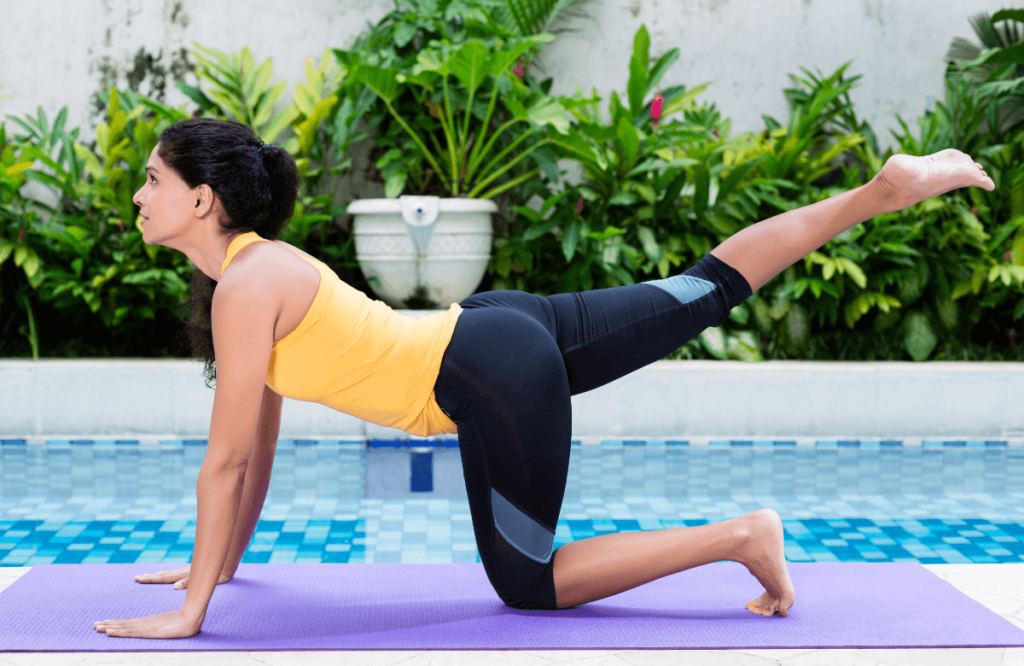
Unlocking Flexibility: Effective Leg Stretching Techniques
As you engage in rigorous leg exercises, it’s crucial to balance your routine with proper stretching. Stretching not only aids in recovery but also enhances flexibility, reduces muscle tightness, and promotes overall mobility. Here, we explore essential leg stretching techniques that can help you maintain pliability and prevent injury.
1. Dynamic Stretching for Warm-Up
Prior to engaging in intense leg workouts, dynamic stretching can effectively warm up your muscles and prepare them for action. Incorporate movements like leg swings, hip circles, and walking lunges into your pre-workout routine. These dynamic stretches boost blood flow, improve range of motion, and set the stage for optimal performance.
2. Quadriceps Stretch
To target the front of your thighs, perform a quadriceps stretch. Stand on one leg and grasp your opposite ankle behind you with your hand. Gently pull your ankle toward your glutes while keeping your knees together. Hold this stretch for 20-30 seconds on each leg, feeling the gentle pull in your quadriceps.
3. Hamstring Stretch
Enhance the flexibility of your hamstrings with this classic stretch. Sit on the floor and extend one leg in front of you while bending the other leg at the knee. Reach forward and gently touch your toes on the extended leg, feeling the stretch in the back of your thigh. Hold for 20-30 seconds on each leg, aiming to increase your range of motion over time.
4. Groin Stretch (Butterfly Stretch)
This stretch targets the inner thighs. Sit on the floor, bend your knees, and bring the soles of your feet together. Gently press your knees toward the ground with your hands, feeling the stretch in your groin area. Hold this stretch for 20-30 seconds, focusing on deep and controlled breaths.
5. Hip Flexor Stretch
Stretching the hip flexors is crucial for maintaining hip mobility. Step forward into a lunge position with one leg while keeping the other leg extended behind you. Lower your hips toward the ground and slightly arch your back, feeling the stretch in the front of your hip on the extended leg. Hold for 20-30 seconds on each side.
6. Calf Stretch
Work on your calf flexibility by leaning against a wall or sturdy surface with your hands. Extend one leg straight behind you while keeping the other leg bent in front of you. Press your heel down toward the ground, feeling the stretch in your calf muscle. Hold for 20-30 seconds on each leg.
7. Full Body Stretching Routine
After your leg workout, engage in a full-body stretching routine. Focus on each major muscle group, including your legs, while holding each stretch for 20-30 seconds. This cooldown stretching routine helps reduce muscle tension and promotes flexibility.
8. Incorporate Yoga and Foam Rolling
Yoga sessions and foam rolling can complement your leg stretching routine. Yoga enhances overall flexibility and mobility, while foam rolling assists in breaking up muscle knots and releasing tension.
Remember that flexibility gains take time and consistency. Regularly incorporating these leg stretching techniques into your fitness routine will contribute to improved mobility, reduced muscle tightness, and enhanced recovery, allowing you to make the most of your leg workouts while preventing potential injuries.

FAQ
How often should I do leg exercises?
Leg exercises can be incorporated into your routine 2-3 times per week, allowing adequate recovery between sessions.
Can I do these exercises at home?
Many of these exercises can be adapted for home workouts with minimal equipment, such as dumbbells or resistance bands.
Should I lift heavy weights for leg exercises?
Gradually increasing weights is essential for muscle growth, but always prioritize proper form to prevent injuries.
Are leg exercises only for bodybuilders?
No, leg exercises benefit everyone, from athletes to casual fitness enthusiasts, by improving strength and overall functional fitness.
Can I substitute one exercise for another?
While these exercises offer unique benefits, you can tailor your routine based on your goals and preferences.



